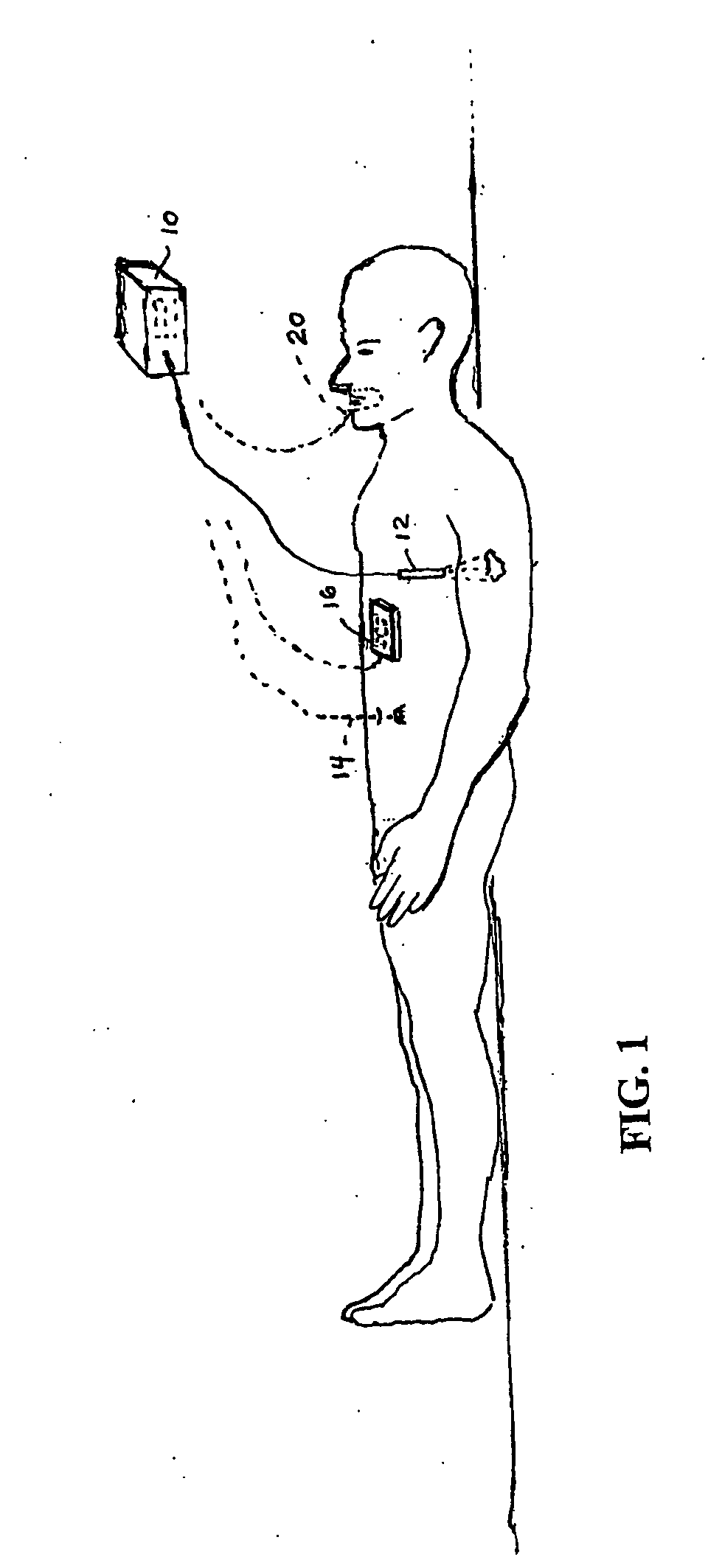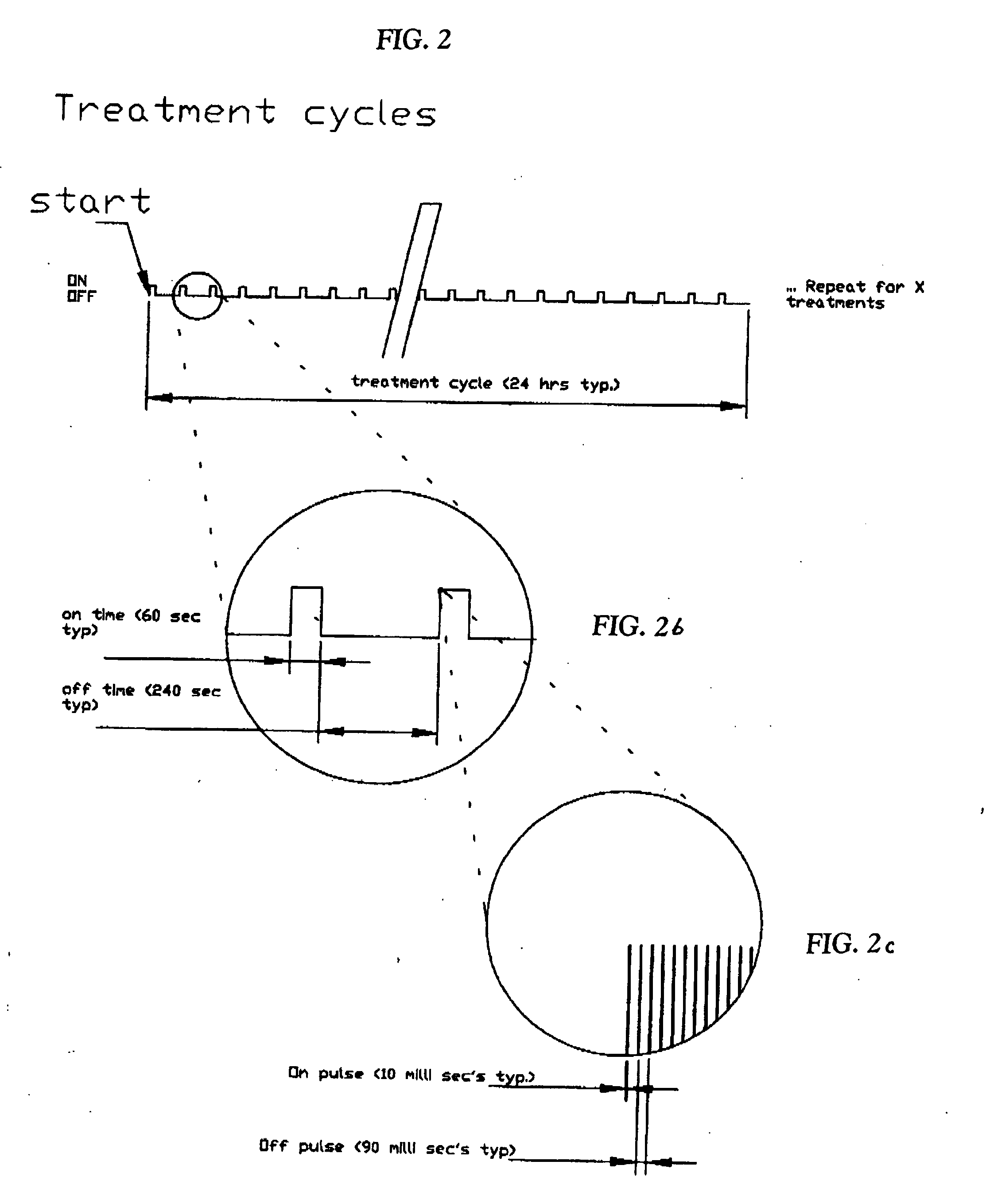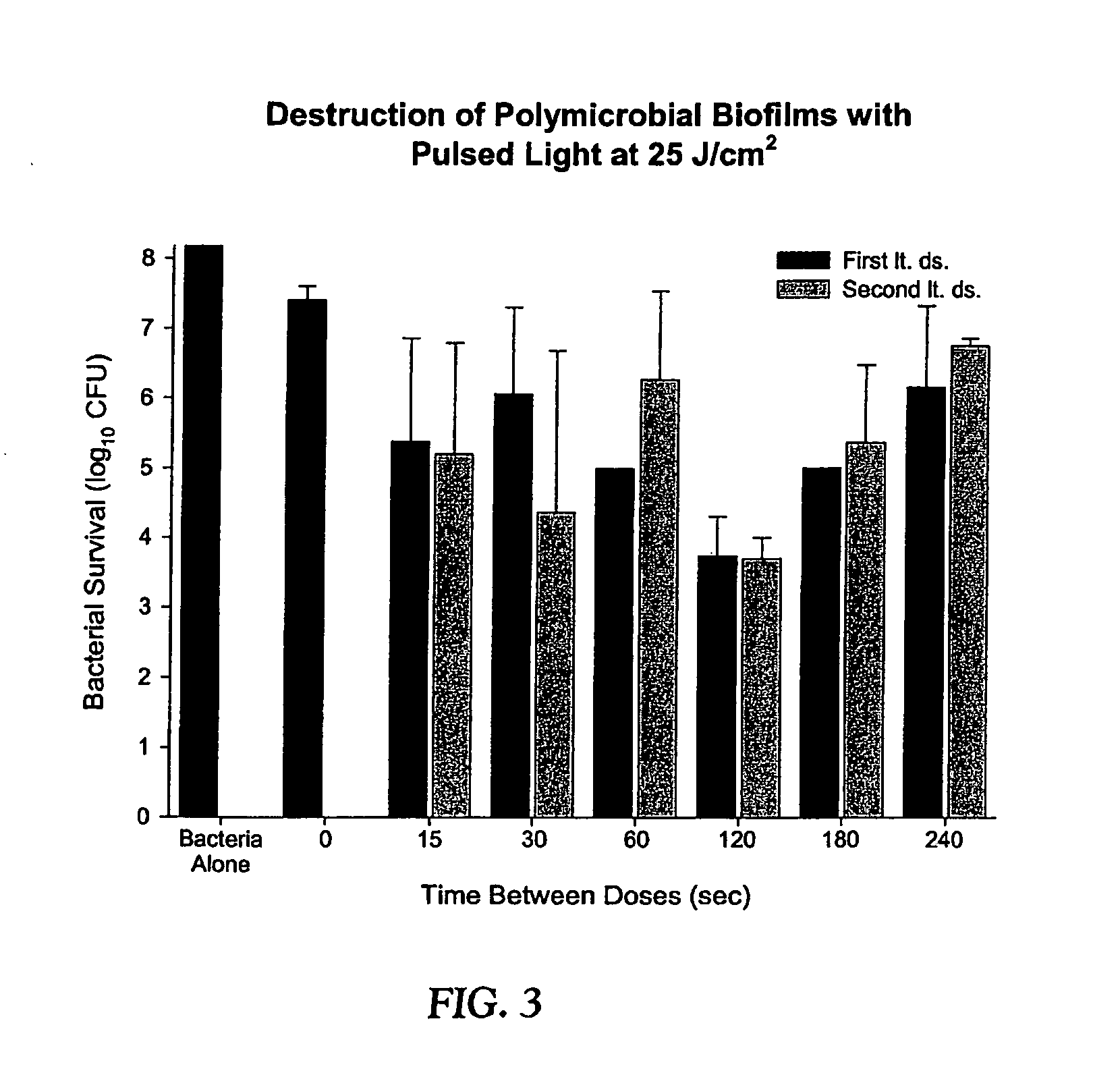Photodynamic therapy utilizing multiple duty cycle light modulation
a light modulation and photodynamic therapy technology, applied in the field of light delivery, can solve the problems of possible side effects, headache, nausea, fever, etc., and achieve the effect of improving the effectiveness of the therapy
- Summary
- Abstract
- Description
- Claims
- Application Information
AI Technical Summary
Benefits of technology
Problems solved by technology
Method used
Image
Examples
Embodiment Construction
[0025] This invention is broadly directed to methods for therapeutically treating a target tissue or destroying or impairing a target cell or a biological component by the specific and selective binding of a photosensitizer agent to the target tissue, cell, or biological component. At least a portion of the subject (mammal, medical equipment, sterilizing apparatus, etc.) is irradiated with light at a wavelength or waveband within a characteristic absorption waveband of the photosensitizing agent. The light is administered by a modulated light source providing fractionated light to the target tissue site. It is contemplated that an optimal modulation frequency for the light administered to a patient or target cells will be determined clinically, for example by using a light dose escalation trial and in view of the particular photosensitive materials, surfactants. In a preferred embodiment, operation of the modulated light source defines a pair of duty cycles as further described here...
PUM
| Property | Measurement | Unit |
|---|---|---|
| Fraction | aaaaa | aaaaa |
| Fraction | aaaaa | aaaaa |
| Fraction | aaaaa | aaaaa |
Abstract
Description
Claims
Application Information
 Login to View More
Login to View More - R&D
- Intellectual Property
- Life Sciences
- Materials
- Tech Scout
- Unparalleled Data Quality
- Higher Quality Content
- 60% Fewer Hallucinations
Browse by: Latest US Patents, China's latest patents, Technical Efficacy Thesaurus, Application Domain, Technology Topic, Popular Technical Reports.
© 2025 PatSnap. All rights reserved.Legal|Privacy policy|Modern Slavery Act Transparency Statement|Sitemap|About US| Contact US: help@patsnap.com



